Filipino snacks, or “merienda” as we often call them, are more than just quick bites—they’re part of our everyday life. Whether you’re grabbing a bite on your way to work or enjoying a snack during a break, these treats remind us of home.

In 2025, our favorite snacks continue to evolve while keeping their rich history intact. Here’s our casual rundown of the top 10 Filipino snacks, complete with their Filipino names, origins, and detailed descriptions for you to learn even more!
1. Pandesal
Pandesal, which means “bread of salt,” is at the top of our list. A breakfast favorite, this soft, slightly sweet bread roll is much more than simply breakfast. It’s delicious right out of the oven because of its light crust and warm, fluffy texture. For many Filipinos, pandesal is a simple yet satisfying meal or snack that may be eaten at any time of day when generously spread with butter, cheese, or even jam.

Origin and Fun Facts:
With Spanish influence, pandesal got its name from the Spanish “pan de sal.“ Over time, it developed into a distinctively Filipino bread that is affordable and adaptable.
2. Banana Cue
Next up is Banana Cue. In Tagalog, “saging” refers to the banana that is used, which is typically the saba banana, and “cue” refers to the stick that is used to serve it. The simplicity of this snack lies in the deep-fried saba bananas coated in caramelized brown sugar, which gives each bite a crispy and sweet taste. It’s a lovely blend of textures that’s best enjoyed warm since the inside remains soft and tender.
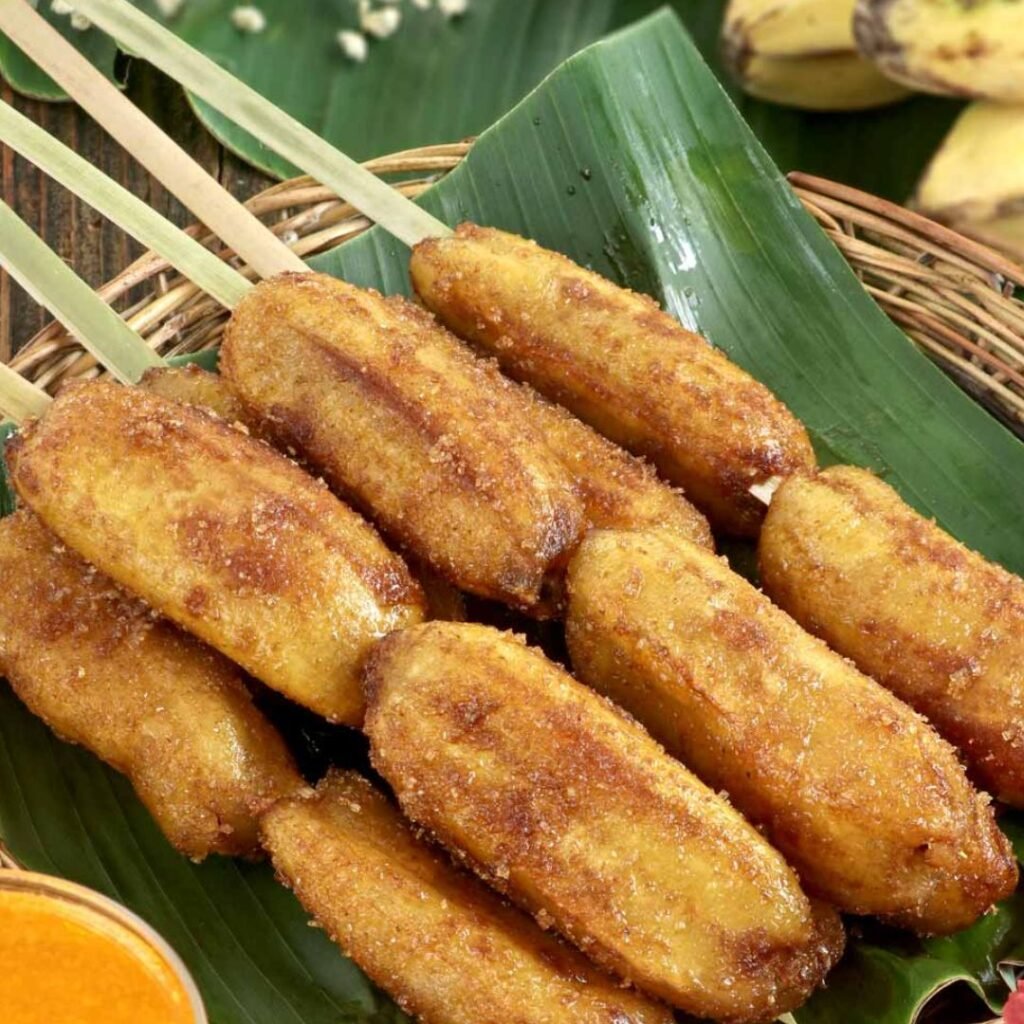
Origin and Fun Facts:
Banana Cue is a common street food in the Philippines. The sweet, crunchy taste of this dessert, which is frequently prepared by street vendors, recalls childhood memories. Over time, some vendors have maintained the traditional flavor while adding a contemporary twist by adding a drizzle of condensed milk or a sprinkling of sea salt.
3. Turon (Banana Spring Roll)
Another popular option is the Banana Spring Roll, also called Turon. This snack wraps sliced saba bananas (and sometimes sweet jackfruit) in a spring roll wrapper before frying it to golden, crispy perfection. The outer shell is crunchy and slightly caramelized, while the inside remains soft and bursting with natural sweetness, creating an excellent balance in every bite.
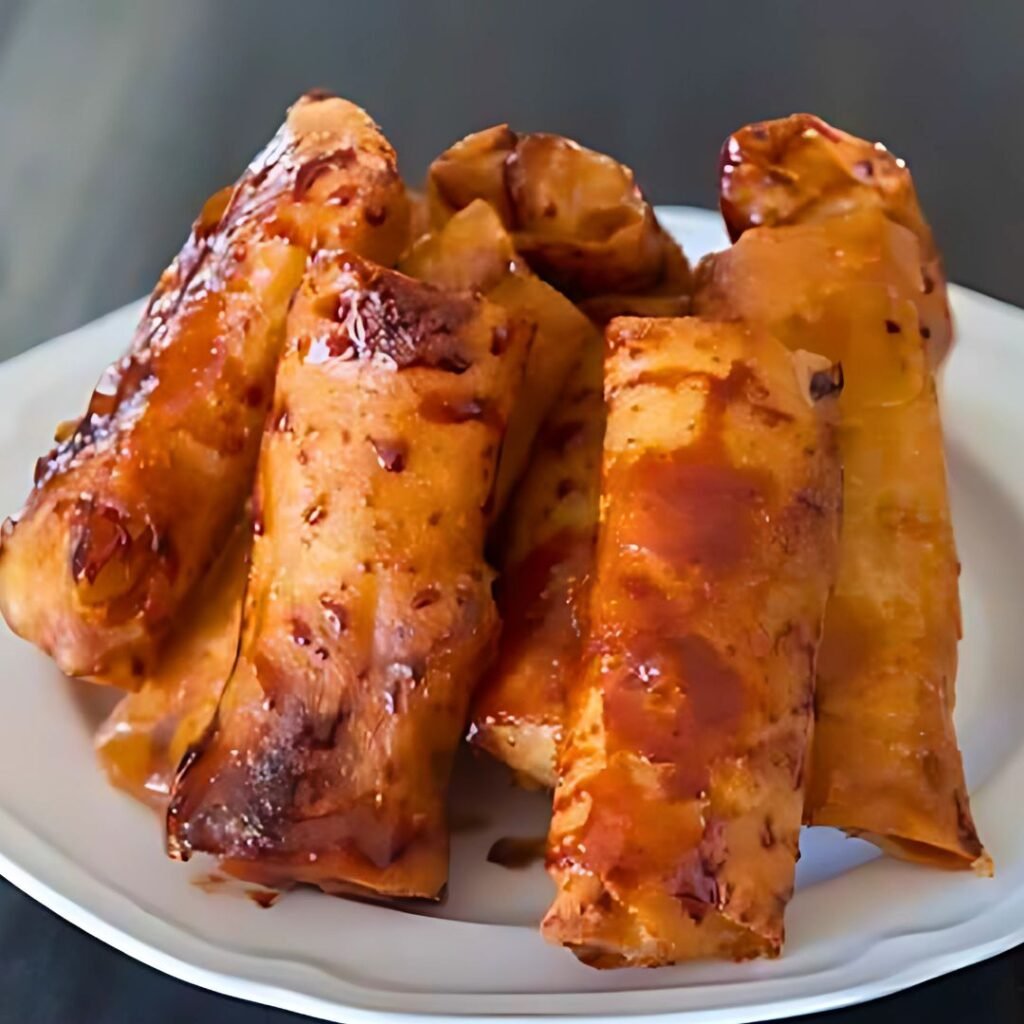
Origin and Fun Facts:
The name “turon” literally means “banana spring roll” in Tagalog. This snack has become popular not only because of its delightful texture but also because it’s fun to eat. Turon is a crunchy and chewy treat, typically enjoyed as merienda or dessert, and is a popular street food often sold alongside banana cue, camote cue, and maruya.
4. Chicharon
A popular delicacy in the Philippines, chicharon (also called tsitsaron) is made with deep-fried pork skins. Pork skin is boiled, seasoned, then deep-fried until it takes on a light, airy and deliciously crunchy texture to create these crispy treats. Chicharon has an irresistible savory, salty flavor and is frequently eaten with a dip of seasoned vinegar.
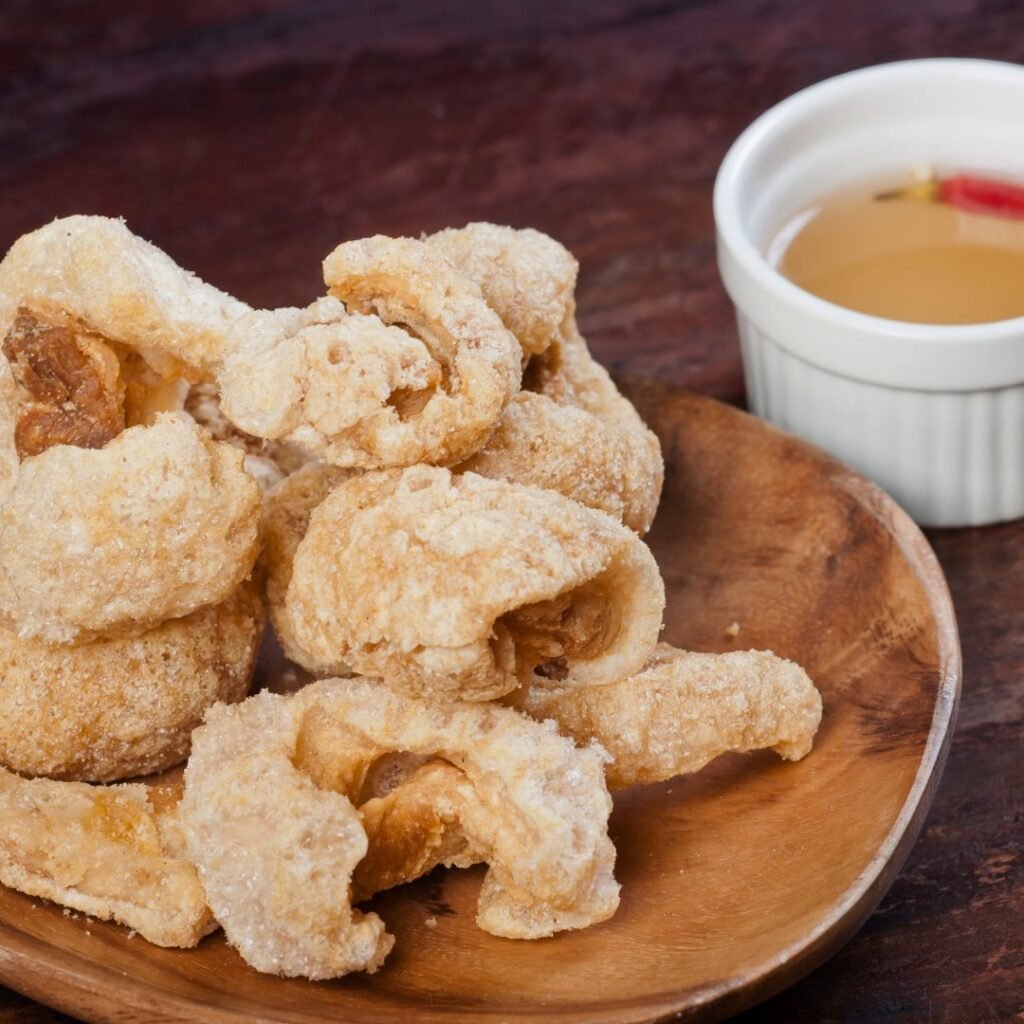
Origin and Fun Facts:
During the Spanish colonization era, which lasted from 1565 until 1898, chicharon was introduced and has strong roots in Filipino culinary traditions. The Spanish word chicharrón is the source of the word “chicharon” itself.
This snack is commonly found in local markets, roadside stalls, and festive gatherings across the Philippines. It’s frequently eaten with a side of vinegar, as a crunchy snack, or with a cool beverage.
Filipinos have creatively expanded chicharon beyond the classic pig rind version to include variations like chicharong bulaklak (made from pork mesentery) and chicharong manok (made from chicken skin). These variations highlight the chicharon’s versatility in Filipino cooking.
5. Lumpiang Shanghai
Lumpiang Shanghai is a Filipino twist on the classic spring roll. These bite-sized rolls are typically packed with a flavorful mixture of ground pork, finely chopped vegetables, and spices. Once deep-fried, the outer wrapper becomes delightfully crispy, while the filling remains juicy and savory. They’re usually served with a sweet and sour dipping sauce, which adds a tangy contrast to the rich flavors inside.

Origin and Fun Facts:
Despite the fact that the word “lumpia” originates from Chinese cuisine, Filipinos have fully adopted and modernized Lumpiang Shanghai. It is a snack that unites people because it is served at festivities and family get-togethers.
6. Taho
One food that may look a little different from the rest is taho, which is warm and smooth. It is composed of silken tofu and topped with chewy sago pearls and arnibal, a sweet syrup. The combination of the warm sweetness and the very smooth, almost custard-like tofu makes it a pleasant delicacy that may make even the coldest mornings more bearable.
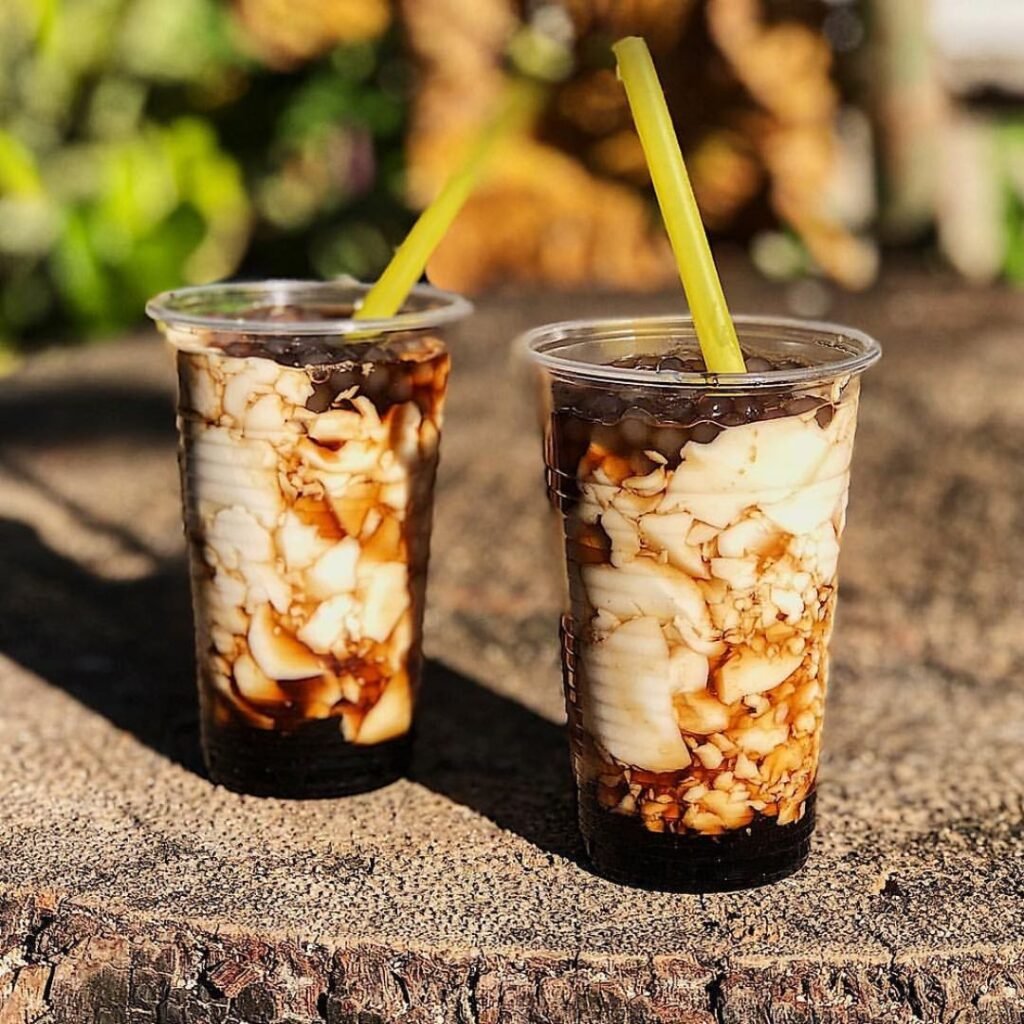
Origin and Fun Facts:
Taho has been sold by street vendors for generations, with many people fondly remembering the early morning calls of “Taho!” echoing through neighborhoods. Its smooth texture and subtle sweetness make it a comforting snack any time of day.
7. Puto
Puto is a kind of steamed rice cake that has a little sweet taste and is light and fluffy. Puto’s soft, sponge-like texture makes it the perfect snack for anyone who wants something mild but satisfying. Its natural sweetness is complemented by salty toppings like cheese or salted eggs, which produce a well-balanced flavor profile.
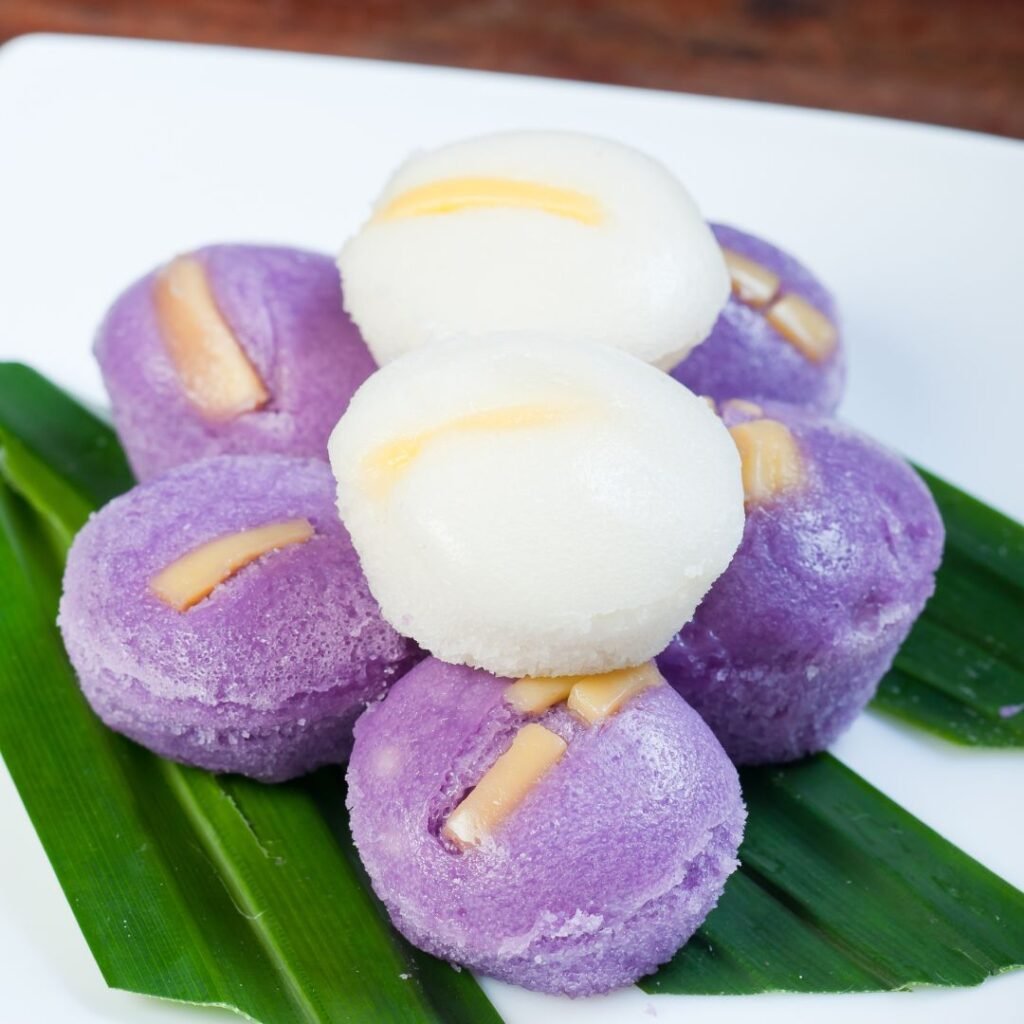
Origin and Fun Facts:
The word “puto” has been part of Filipino culinary vocabulary for generations, with many families passing down recipes from one generation to the next. Modern versions now include flavors like ube (purple yam) or pandan, showing how tradition meets advancements.
8. Bibingka
Bibingka is a warm, aromatic rice cake that is mostly eaten around Christmas, but it is a year-round favorite. The interior of the bibingka stays soft and moist while the outside gets somewhat crispy when baked in clay pots lined with banana leaves. A uniquely festive delicacy that feels like a warm hug on a chilly day is created by the aroma of coconut milk and the mild smoky flavor of the banana leaves.
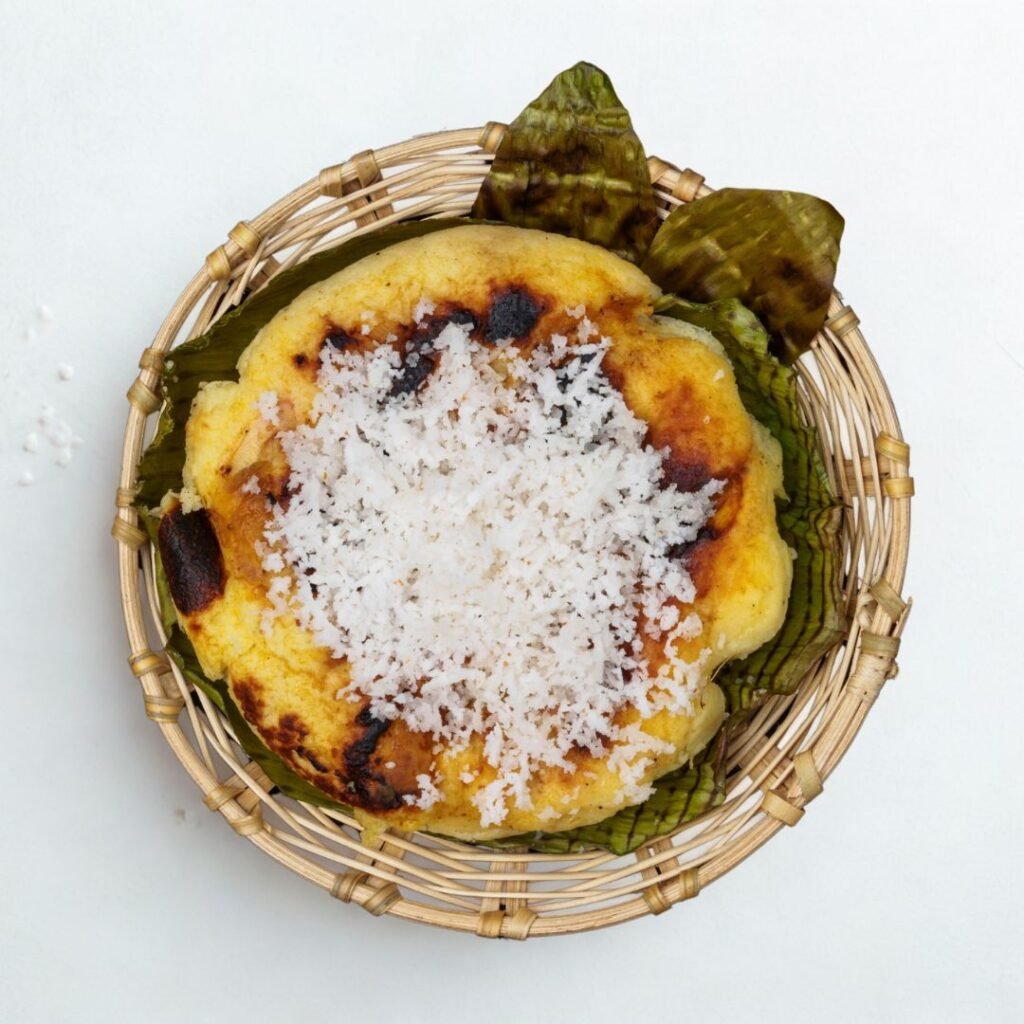
Origin and Fun Facts:
Bibingka’s strong ties to Filipino holiday traditions and its unique baking method set it apart as a special treat. Its preparation and presentation bring back memories of early morning markets and family celebration.
9. Kwek-Kwek
Kwek-Kwek is a fun and colorful snack made from boiled quail eggs dipped in a vibrant orange batter and deep-fried until crispy. The result is a snack that boasts a crunchy exterior with a tender, creamy egg inside. The striking color and unique texture make it a favorite among kids and adults alike, adding a playful element to the typical street food lineup.

Origin and Fun Facts:
Kwek-Kwek is a common sight at street stalls and festivals. Its playful name and appearance perfectly capture the energetic spirit of Filipino street food.
10. Siomai
Our list would not be complete without siomai, a kind of steamed dumpling stuffed with a delicate mixture of veggies, shrimp, and ground pork. The wrapper is soft and thin, allowing the savory, juicy filling to take center stage. Each bite is bursting with flavor, making it a versatile snack that can be enjoyed at any time of day. It is frequently served with a hot chili sauce or a tangy soy-vinegar dipping sauce.

Origin and Fun Facts:
Siomai is a great example of how Filipino cuisine adapts and evolves. Although the name originates from Chinese food, local chefs have added tastes that appeal to our palates to make it distinctly Filipino
A Little Chat About Our Snacks
What makes these snacks so special isn’t just their flavors—it’s also the stories behind them. Every snack here carries a piece of Filipino culture. For instance, pandesal isn’t just bread; it’s the warm start to countless mornings and a symbol of home. Banana Cue and Turon remind us of the hustle and bustle of local markets and the simple joys of childhood.
Filipino snacks allow us to express our creativity in the kitchen as well. These classics are given unique twists by numerous vendors and home cooks. These snacks continue to develop while complying to their origins, whether it’s a healthier version of chicharon or modern day Lumpiang Shanghai.
Filipino culture places a high value on sharing meals. When you share a plate of siomai with friends or eat pandesal with a cup of coffee, these treats build connections and lasting memories. They are small celebrations of life and culture that go beyond simply serving food.
So, the next time you’re on the go or just in the mood for a snack, why not try one of these top 10 favorites? Each bite is a taste of tradition, a nod to modern twists, and a reminder of the warmth and creativity that make Filipino cuisine so special.